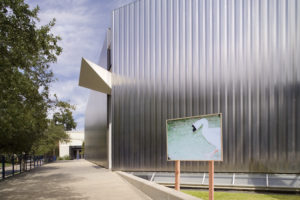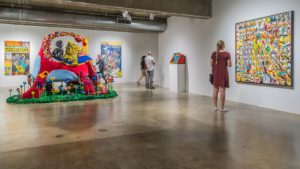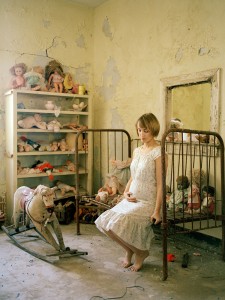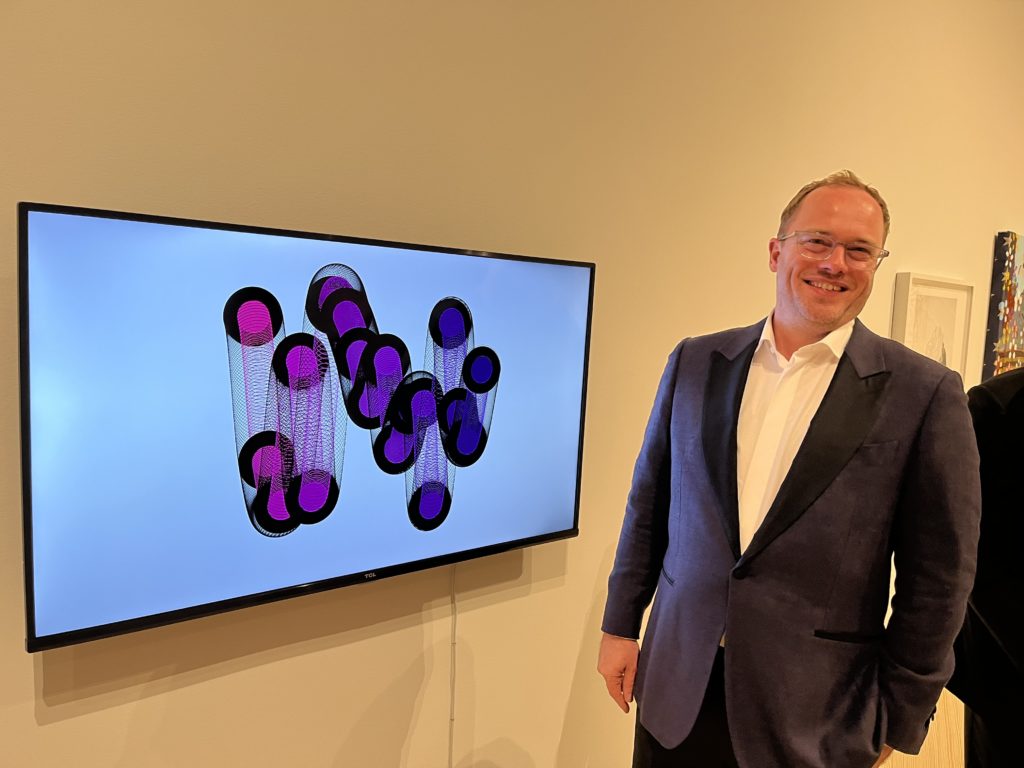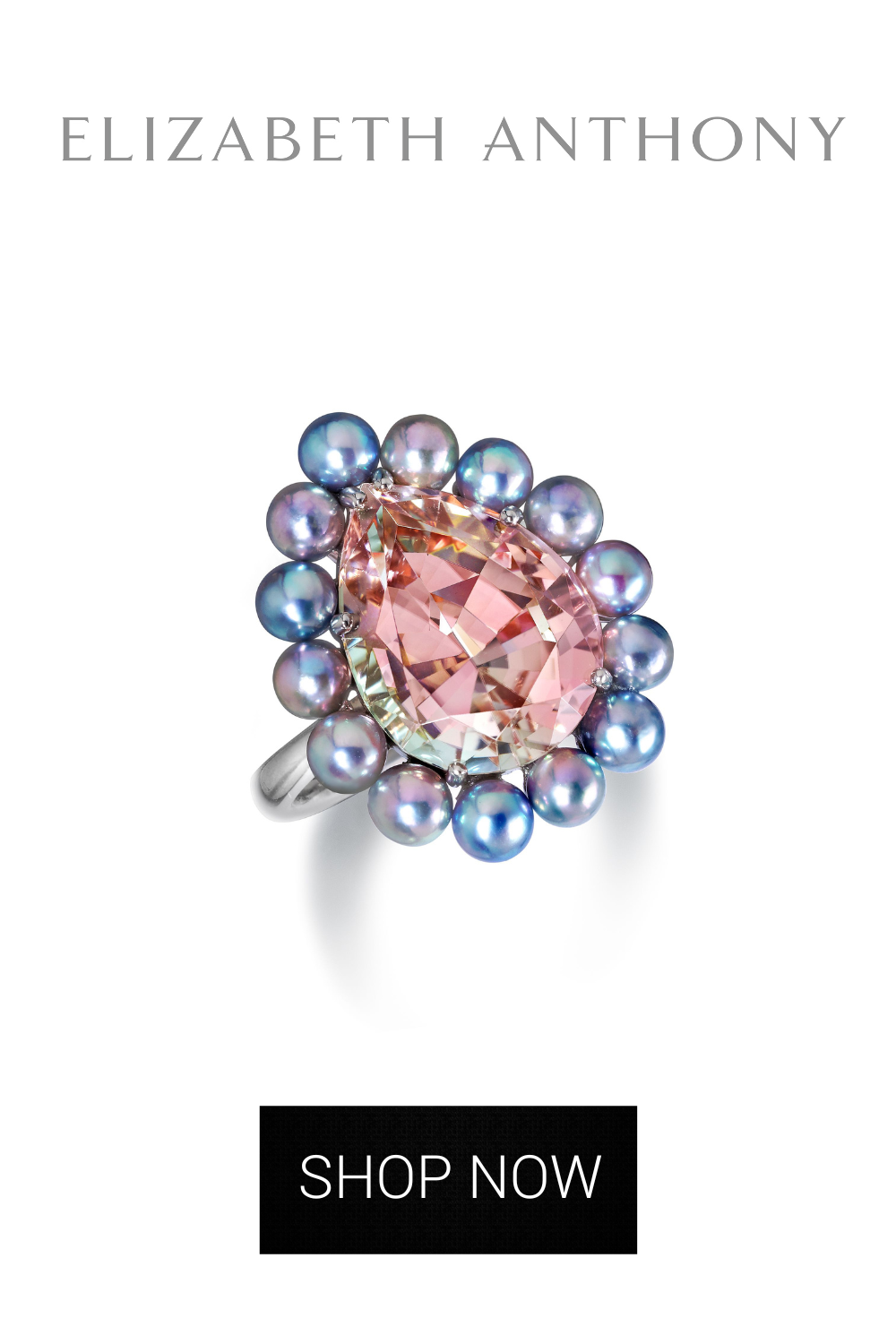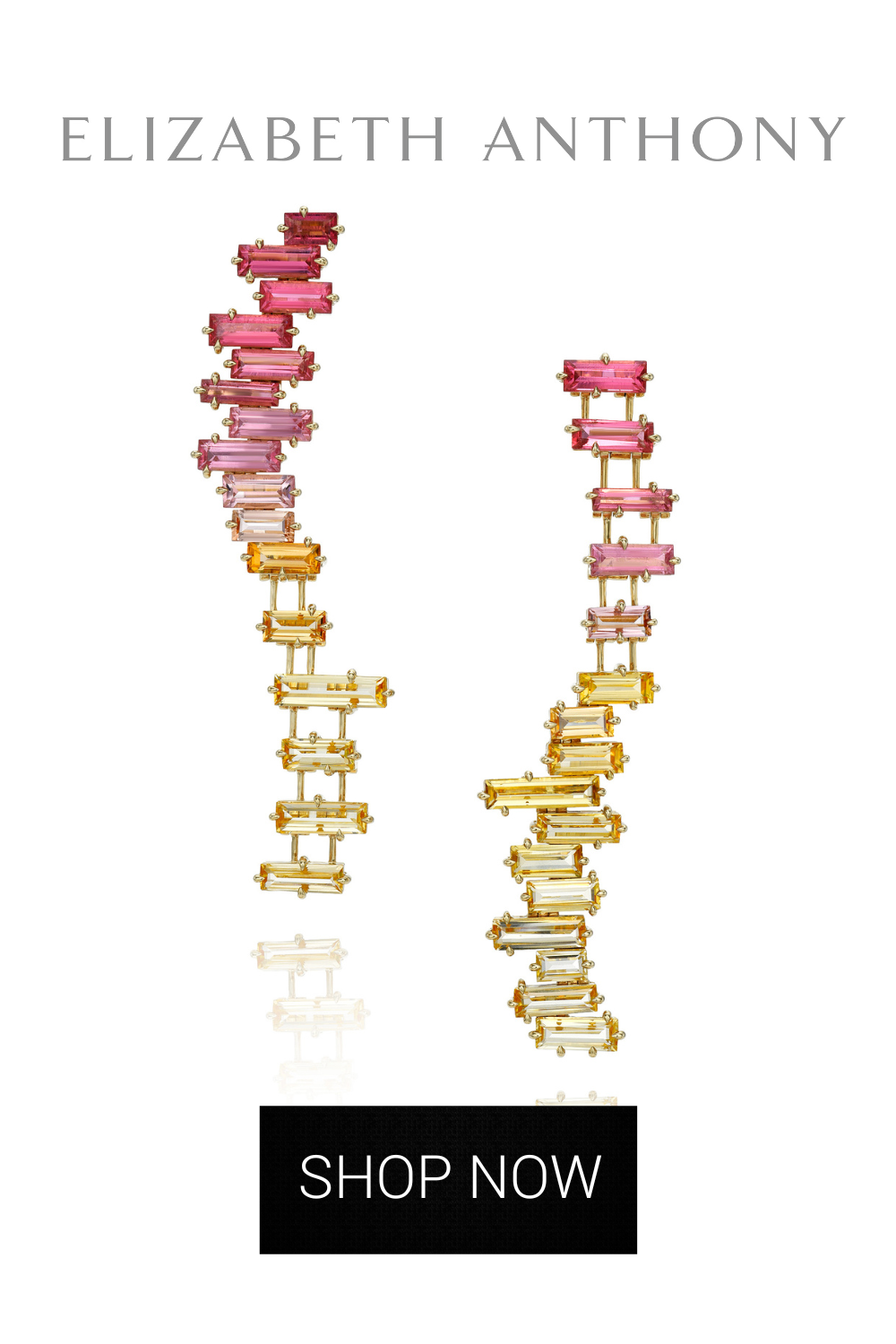Embracing the Radical Legacy of Houston’s Maverick Museum, CAMH Leader Hesse McGraw Wants Art That Impacts the World
Creative Work That's a Catalyst For Change
BY Alison Medley // 01.04.23Contemporary Arts Museum director Hesse McGraw is all about making art accessible to all. (Photo by Alison Medley)
There is something unassuming, contemplative and distinctly nuanced about Contemporary Arts Museum Houston (CAMH) director Hesse McGraw’s responses when you’re in the flow of a conversation. In his self-effacing style, McGraw intrinsically doesn’t want the spotlight to be on him, but rather on the artists whose visceral works grace the galleries of the Contemporary Arts Museum Houston.
“What I am motivated by is what our team with the museum can do in terms of connecting artists and audiences in unforgettable ways,” McGraw says. “My legacy is not a motivating factor. When someone walks in the front door, they may be coming for the 100th time or for the very first time. They’re trying to create an experience for that moment that’s welcoming, that introduces a new idea.
“Hopefully, it creates some kind of dialogue — the artwork and their relationship to it and the world.”
A fresh unconventional talent with a curatorial eye, McGraw is the 10th director of the Contemporary Arts Museum Houston. McGraw’s vision is forged in the realm of curating and creating transformative art which truly reflects communities.
“As an institution, CAMH can position artists to have an impact not only in the art world but also across sectors to address the real problems of our world, “ McGraw tells PaperCity. “Artists bring new insights, new ways of thinking about the things that are making problems in our world. We always find solutions just beyond our reach.
“Artists are uniquely able to reach out in a way that brings others along. Art is so transformative. It solves so many deeper problems. . . or triggers reflection. Art changes the way that people see the world. Then, this is what makes the change — the expression of the artist.
“A work of art is the catalyst which can help make the change happen. These are nuances that are worth it.”
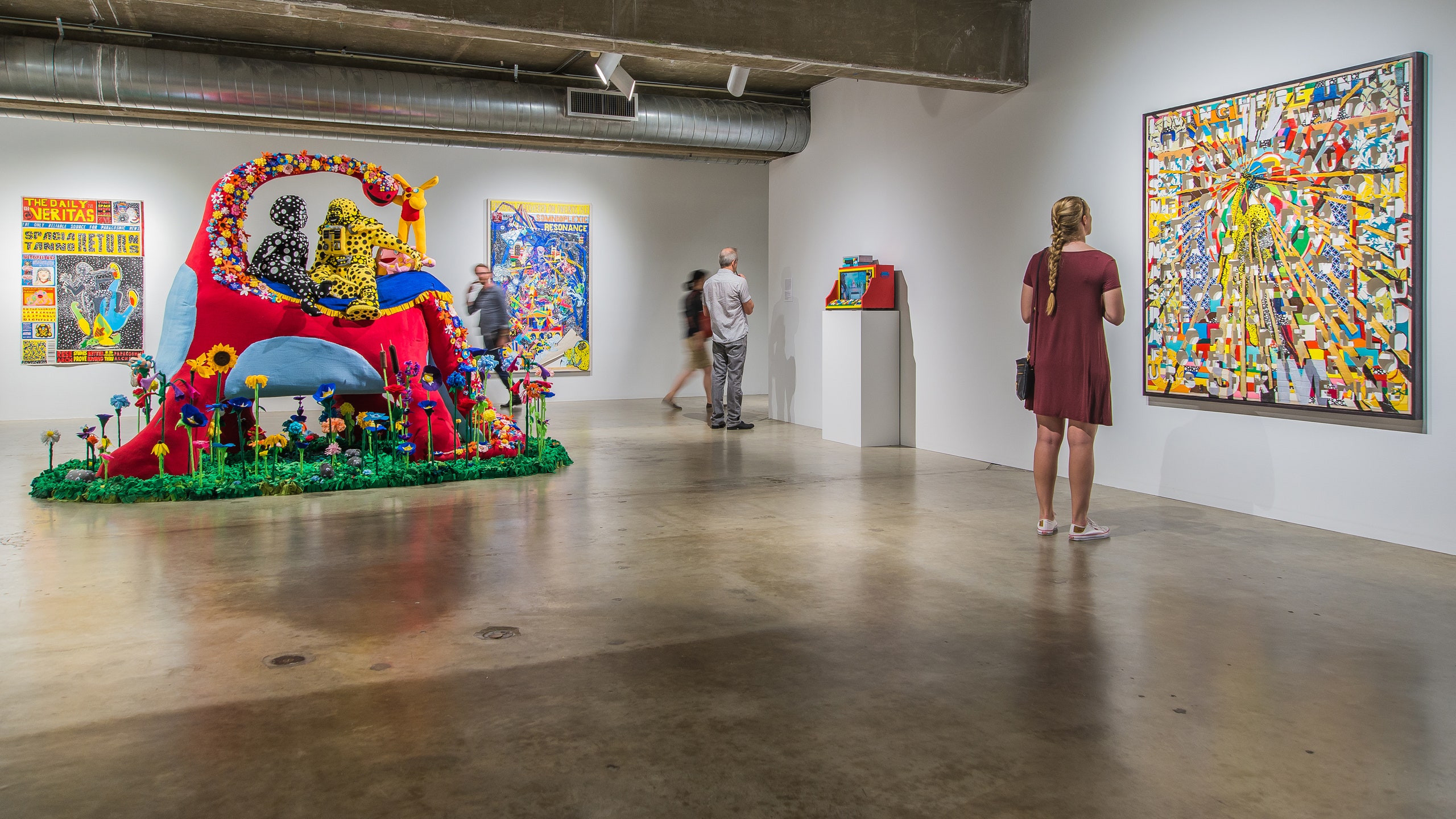
Throughout his three years as the CAMH director, McGraw has deeply embraced what he calls the “radical legacy” of the museum.
“Thinking about where CAMH has been most impactful, there are few strains of curatorial work that have identified and staked ground for the CAMH — including first solo shows and a whole history of first solo shows like Cindy Sherman, Julian Schnabel, Garrett Bradley,” McGraw notes. “These artists become defining figures and they have been introduced at the CAMH. Another show that has been a game-changing group show that brings to the forefront a new way of thinking of art history is The Dirty South.
“The Dirty South certainly did that. Radical Presence did that. Toby Kamps’ show No Zoning and The Old, Weird America did that.”
McGraw has collaborated with artistic visionaries including Theaster Gates and conceptual artist Jill Magid in her pivotal protest piece entitled “The Proposal.” In Magid’s “The Proposal,” Magid takes a strong stance about returning Pritzker-winning architect Luis Barragán’s archives to their homeland of Mexico from Switzerland. While Barragán’s personal archive remains in Mexico, Barragán’s professional archive was purchased by Swiss furniture company Vitra CEO Rolf Fehlbaum who then reportedly gifted it to his fiancé Federica.
“So with Jill Magid’s project, there is a binary field about it,” McGraw says. “There’s a lot of writing about it. She discovered this strange thing about Luis Barragán after he passed away — where the archive split into two. Legend has it, that it was gift from a CEO to his fiancé.
“The archive is now in a bunker. We commissioned a project through which Magid exhumed a portion of Barragán’s remains and compressed the ashes into a diamond. The diamond was then set in an engagement ring and a proposal was made to Federica that she could have it in exchange for Barragán’s body of work. That was Magid’s work.”
McGraw celebrates the dynamic energy in Magid’s project when she delved into the intersections of repatriation, international property rights and the protection of national identity.
“It was intense,” McGraw says. “After 25 years, Federica announced that the archive would become public in Switzerland.”
Diverse Art and Fostering the Artists of the Future
One of the most significant concepts for McGraw is that the CAMH continues to connect generations of Houstonians to the creation and curation of vibrant, diverse works of art.
“We’re also working with artists on ideas that may be one year out, three years or 10 years out,” McGraw says. “But every step along the way is important and creates new connections across our city. The thing for me to realize is that CAMH is impacting peoples’ lives for generations.
“And there are cases where the children of key board members are now involved, or their children grew up in the museum. Or the donors come to CAMH because they want the city to be more vibrant and vital for the next generation.
“We try to take the most immediate perspective. What is the most engaging experience we can have now today? And how do we think in a longterm way? How does this place give life to the city?”
Before McGraw embraced the directorial role at the CAMH, he was a partner of the trailblazing architecture firm El Dorado Inc. in Kansas City. Prior to El Dorado, McGraw’s distinctive curatorial work was unveiled during his post at San Francisco Art Institute (SFAI) where he helped nurture Jill Magid’s piece “The Proposal” to fruition.
“I just feel personally that I’ve been really lucky,” McGraw says. “I feel fortunate and grateful to have a life in art. It brings so much joy and sense of possibility to the world. Artists are really the ones who bring ingenuity and a sense of shared possibility and common ground to the table.
“That feels to me, something we can hang our hat on. Hopefully, I bring enough gregariousness to it. If we can become less like a museum and more like a place that has resonance and impact in people’s lives, then we will be successful.”
It was a moment when he was 14 when McGraw first felt aligned to the idea of art as his raison d’etre and his passion.
“There were a few things that blew off the doors for me,” he says. “I can think of two specific moments. When I was 14, I stumbled into the Gallery of Art at Johnson County Community College in Kansas. There was a show of Kerry James Marshall. The way Kerry represented figures was also a reference to Los Angeles and was completely unknown to me who grew up in suburbs of Kansas City.
“It broke my brain to see his work. It haunted me, and I kept going back. Those moments that brought the uprising and possibilities of how you imagine yourself and your life, they open new pathways. I was fortunate to have those moments.”
Telling Important Stories Through Art
What excites McGraw now are significant curatorial and creative endeavors, emerging on the forefront for CAMH, including a collaboration with the Houston Freedman’s Town Conservancy.
“We are also working in partnership with Houston Conservancy to support their goals to preserve and tell a story of freedom,” McGraw tells PaperCity. “Our role is to support artists working in collaboration within Freedman’s Conservancy. One of the primary things they are working on is the longterm archaeological goal to preserve the streets. We have begun working with HFTC and the artist Theastre Gates.
“We are at the beginning of the project, but the goal is that we will bring many local artists into residencies, temporary public art projects, exhibitions, alongside of planning and design process that will support the longterm archaeological preservation of the streets.”
McGraw resonates with the restless energy and rich diversity of Houston, and it showed in CAMH’s 2022 Art Auction and Gala. Emerging artists whose thoughtful works were on the display at the auction included Lamonté French, Sarah Sudhoff, Erick Calderon, Mariah Garnett, Will Henry, Richard Hoeck+Paul Renner, Floyd Newsum, Emily Peacock, Alexis Pye, Kaneem Smitha and Lanecia Rouse.
“The majority of those artists in the auction live in Houston, but were not originally from here,” McGraw notes. “They’re from Venezuela, El Salvador, Cuba. They found a community that is really open in Houston, and it’s more vibrant than you might expect.
“It is a city of wild possibility. There’s both a wildcat ethos and a moonshot mentality, and these things come together in a delightful creative friction in which things can happen.”
Deeply interwoven in McGraw’s drive to making art accessible to all is his vision of making it accessible and affordable for the artists who live in Houston.
“Houston is an expensive place to live,” McGraw says. “It is hard to get around. There’s incredible wealth here. But artists are not concentrated in any specific neighborhood. If we could find a way to create opportunities for artists to reduce their expenses and increase their income in a concentrated way, then the entire cultural ecology will be better for it.
“The city would be better for it — our larger cultural community. There was a study recently that showed the three things that artists need — affordable health care, affordable studio space and access to resources.”
McGraw’s ethos is rooted in the idea of giving voice and leadership to the artists whose work is an energetic reflection of Houston.
“As a museum, we’re engaged in the whole life of the city,” McGraw says. “We are really letting artists take the lead. Houston is one of the most diverse cities in the country as a demographic population. Fairly uniquely, the circle of most prominent artists who work in Houston are working on issues of community impact, with social justice at the forefront.
“Also as a museum, we’re trying to get outside of our comfort zones. We are trying to get new relationships and new ways of activating the city. Often museums are seen as Ivory Towers. We were the only venue where the Dirty South was free to all, and that is one of our greatest successes.”
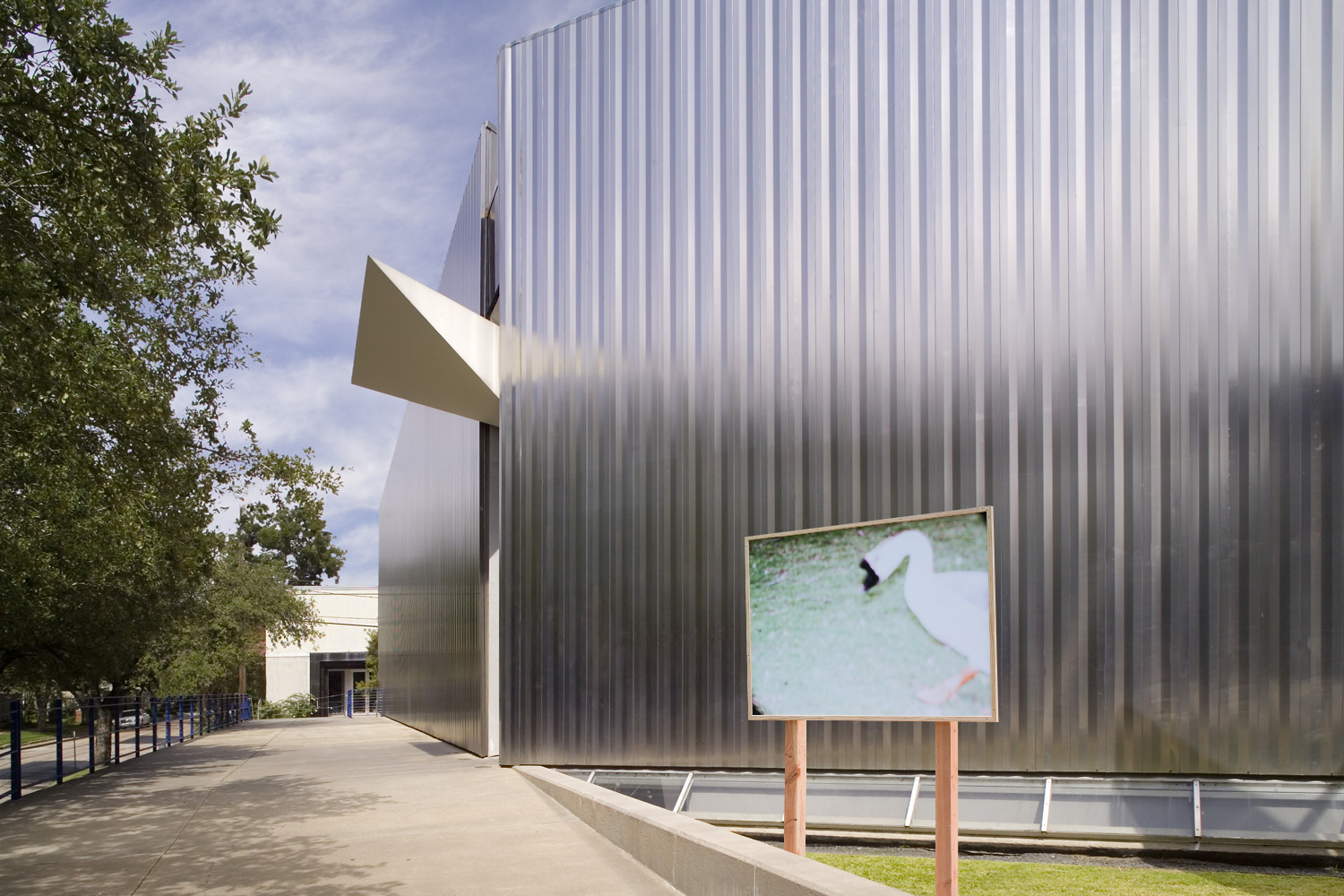
McGraw describes his work with CAMH as “endlessly inspiring,” He believes that art can be a source of community healing.
“It’s a daily dose of getting amazed about the world,” McGraw tells PaperCity. “For an organization to be imbued with that kind of curiosity, it creates a thrilling life. At our best, CAMH shares that joy with the public and inspires others to be engaged in contemporary art.
“Our focus is when people come to CAMH, that they leave with something new, something that’s not rote or predictable. It’s about opening a new way of engaging with the world. I do not think we have many outlets for that left. Our political environment has become a performance of disunity.
“I think what artists do is create common ground when it is least expected. They do bring together polarizing topics in ways that are reunifying and healing.”
When McGraw speaks of art healing communities, he brings up a quote that the conceptual artist Lauren Bon has used in her work: “Artists need to create at the same scale that society has the capacity to destroy.”
“I also think, instead of society’s capacity to destroy, what about the capacity to hope, capacity to renew and capacity reimagine?” McGraw says. “Artists are reimagining new forms of renewal that are right in front of us.”
Right here in Houston.

